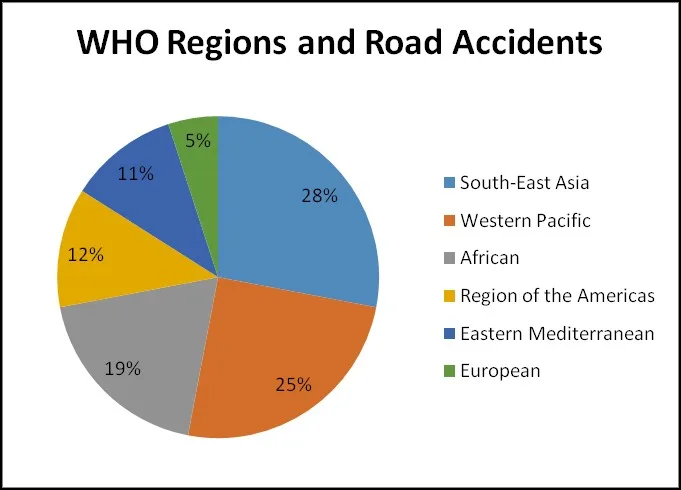Syllabus: GS1/Urban development
Context
- The World Health Organization (WHO) has called on countries in the southeast Asia region to accelerate measures to reduce road traffic deaths, a leading cause of mortality among people aged between 15 and 29.
About
- Vulnerable road users, including pedestrians, bicyclists, and two or three-wheelers constitute 66% of all reported road traffic deaths in the southeast Asia region.
- The region accounted for 3,30,223 of the 1.19 million estimated global road traffic deaths in 2021, accounting for 28% of the global burden.
- The WHO South-East Asia Region, amid rapid urbanization, faces challenges such as,
- High prevalence of motorized two and three-wheelers,
- Inadequate traffic injury data, poor pedestrian and cyclist infrastructure, and
- Limited emergency services.
- With 70% of the global population projected to live in urban areas by 2030, demand for public transport will surge.

Road Accidents in India
- According to the World Health Organization (WHO), each year, 3,00,000 people are estimated to be killed on the road in India. It is equivalent to more than 34 people every hour of every day.
- In India, road crashes are estimated to cost between 5% and 7% of national GDP.
Focus areas for better safety
- Helmet use: It must be enforced among motorcyclists as well as their pillion passengers. Correct helmet use can lead to a 42% reduction in the risk of fatal injuries.
- Speeding must be reduced: Speeding causes 70% of India’s road crash deaths. Also there should be no tolerance for drink-driving.
- Road infrastructure should be enhanced: Many roads are not in a safe condition, although government programmes in recent years have led to rapid improvements.
- Behavioral changes: Large-scale public awareness campaigns such as the new UN global campaign for road safety #MakeASafetyStatement, involving international celebrities, must be undertaken to secure behavioral changes.
Steps taken by India
- Implementation of the Motor Vehicles (Amendment) Act, 2019.
- The Act hike in penalties for traffic violations, electronic monitoring of the same, enhanced penalties for juvenile driving,
- Computerization/automation of vehicle fitness tests, recall of defective vehicles, streamlining the third party insurance and payment of increased compensation for hit and run cases etc.
Global measures
- Road safety, a public health and development priority, is crucial to achieving the UN Sustainable Development Goals (SDGs).
- In September 2020, the UN General Assembly launched the Decade of Action for Road Safety 2021-2030 which aims to reduce road traffic deaths and injuries by at least 50% by 2030.
Way Ahead
- Low- and Middle-Income Countries need to prioritize the safety of vulnerable road users, such as pedestrians, cyclists, and riders of two and three-wheelers who are disproportionately at higher risk.
- Strengthening trauma and emergency care systems, enhancing road safety data, strong leadership and promoting collaboration among all stakeholders are essential for improving road safety.
- While the WHO South-East Asia Region saw a 2% decrease in road fatalities in 2021, contributing to a global 5% reduction, further efforts are needed to meet global targets.
Source: TH
Previous article
News In Short – 03-09-2024
Next article
New Insights into the Lothal Dockyard Theory